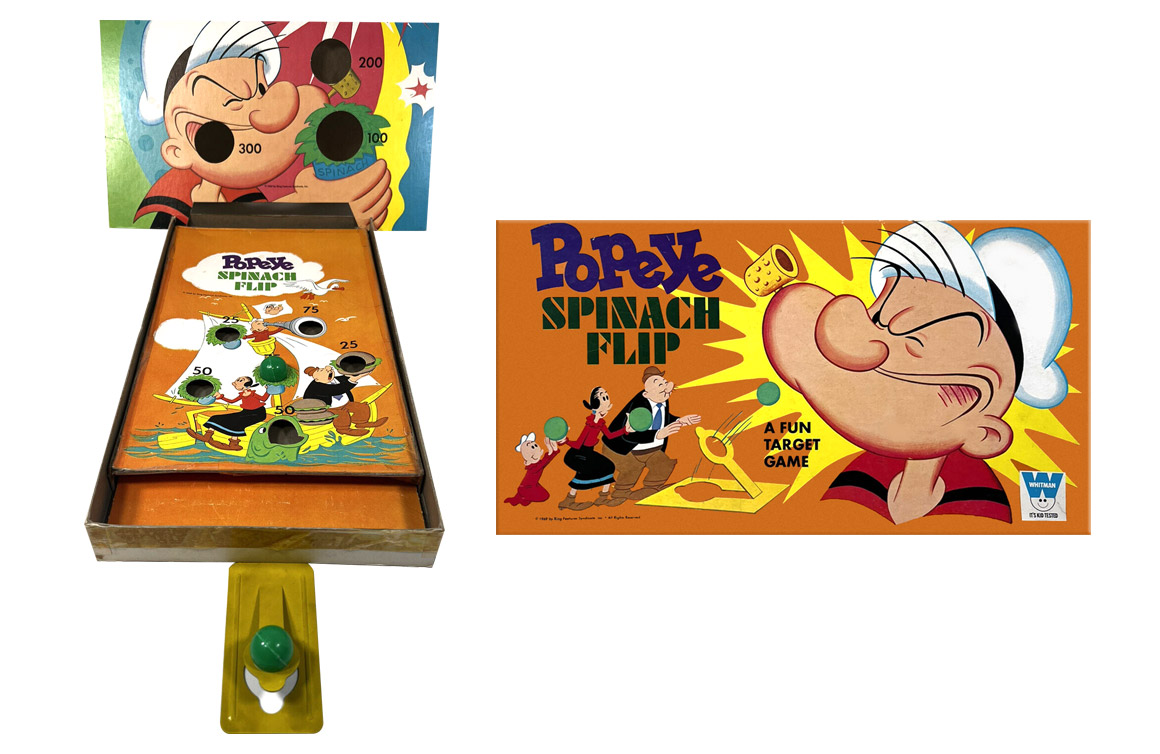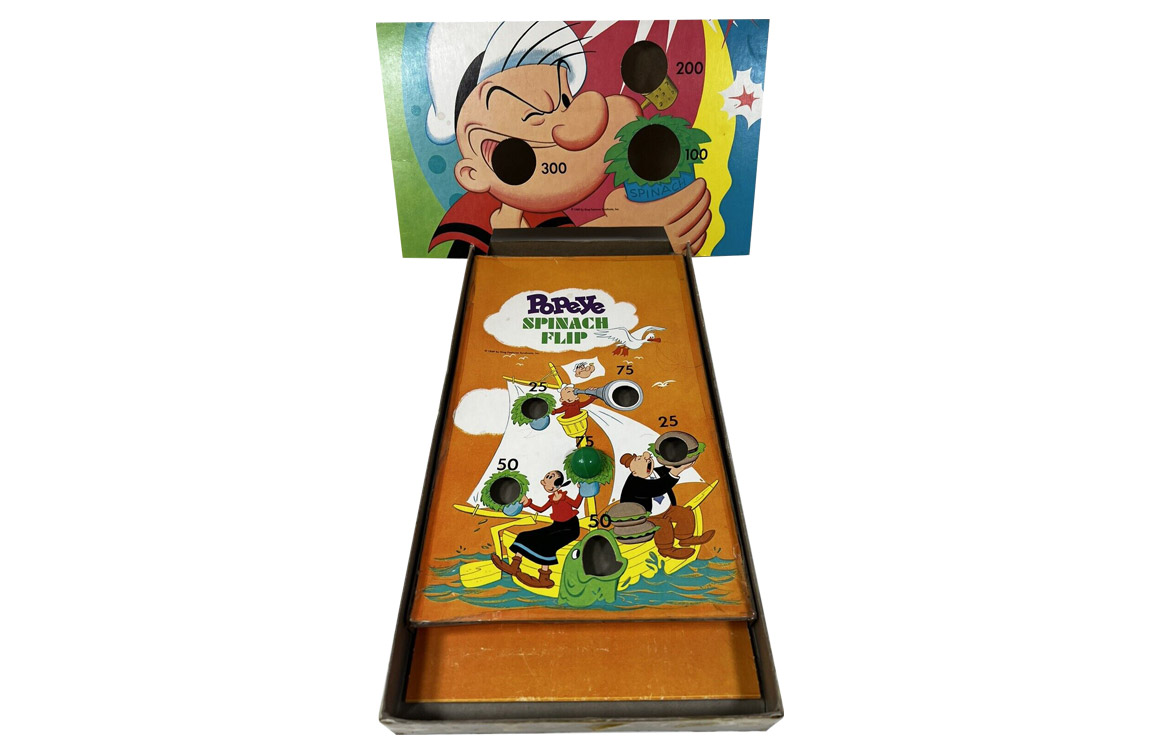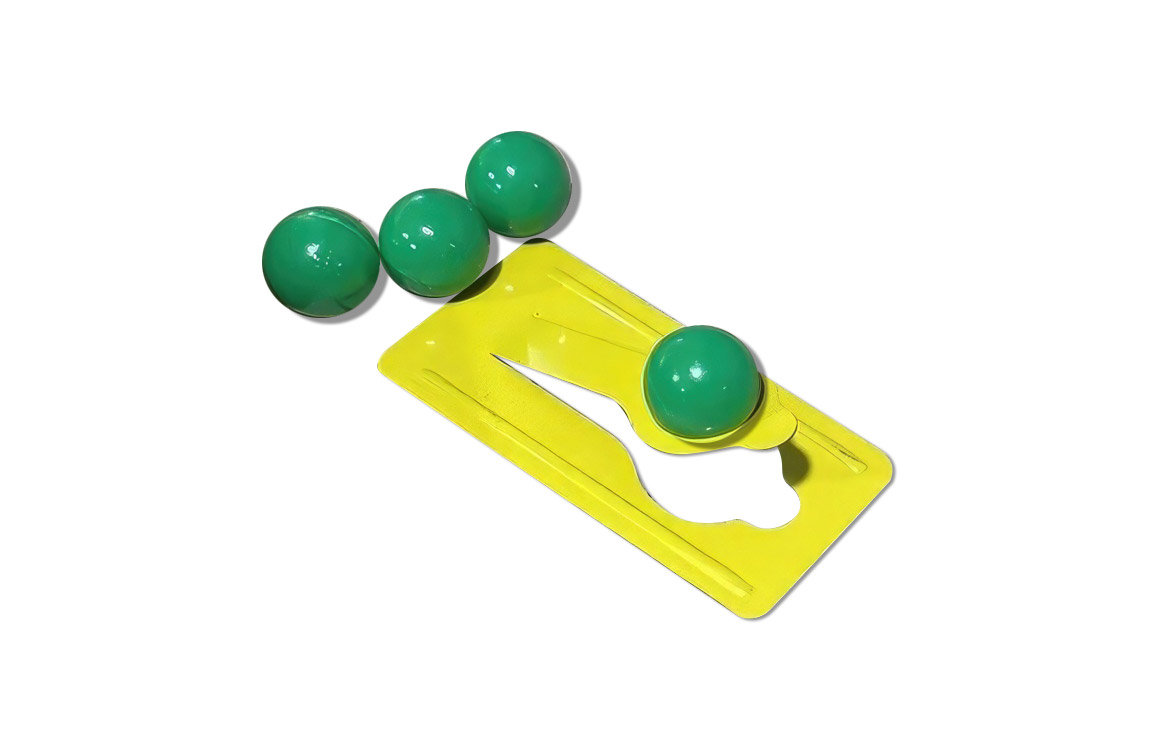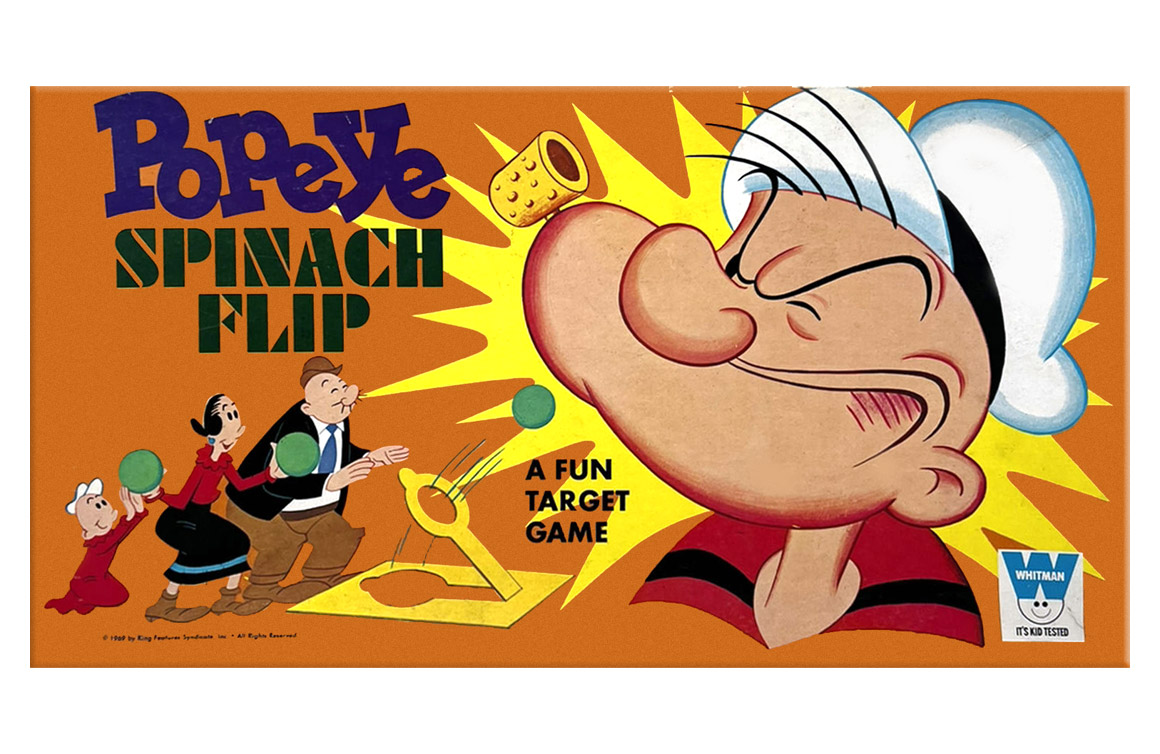Published by Whitman in 1969, the Popeye Spinach Flip game challenged players to fling spinach balls towards a target in the hopes that hand-eye coordination and luck would unite for a triumphant score.
GAMEPLAY
The object of the game was to obtain the highest score by launching a series of plastic spinach balls towards a target illustrated with images of characters from the Popeye comics and a point value.
The upright target board featured Popeye and three holes with point values of 300, 200, and 100. The bottom section of the platform featured Olive Oyl, Swee’Pea, and Wimpy on a sailboat with target holes marked 25, 50, and 75.
Players placed the spinach flipper in front of the target and launched each of the four spinach balls towards the Popeye target. Points were earned based on which of the three target holes the spinach entered. Additional points were awarded if the ball rolled down the platform portion of the game and settled on one of the target spaces. No points were given for spinach balls that failed to make it through a target hole.
Each turn consisted of four shots. Players took turns launching the spinach and recording their scores. The first player to earn 1,000 points won the game.
Popeye Spinach Flip could also be enjoyed solo, with a single player aiming to beat their own best score.
IN THE BOX
A complete game included the upright Popeye target, a platform target, a spinach flipper, and four spinach balls. Instructions were printed inside the box top.
COLLECTOR CONSIDERATIONS
Whitman used the Popeye characters in games, comic books, the Big Little Book series, and other media. In Popeye Spinach Flip, the company married the familiar play pattern of Skee-Ball with the characters created by E.C. Segar and first published in 1929.
Those wanting to boost their game collection with the family-friendly Popeye Spinach Flip should have no trouble acquiring an edition through an online marketplace or auction houses specializing in objects of play. Finding one in mint condition may be a hurdle, however. The cardboard components degraded over time due to light exposure, high humidity, and rambunctious play.
Note: If you buy something using the eBay link in this story, we may earn a small commission. Thank you for supporting independent toy journalism!




